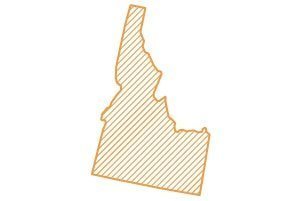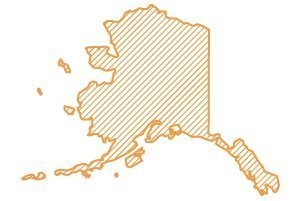The Bureau of Labor Statistics projects employment in social work to grow 7% by 2033, 4% higher than the average growth rate of occupations. In Oregon, the projected growth in the field is much higher, at 15%. Growth in the social work field in Oregon is impacted by a growing population in urban areas, such as Portland, as well as the landscape of the Oregon population. The Census Bureau reports that 19.6% of the population is over the age of 65, and 13.6% of the population is children under the age of 18, highlighting the need for elder care and child welfare services. The Oregon Department of Human Services reported that 10,000 children were involved in child protective services in 2022. 15.3% of individuals have a disability, adding to the need for social workers to provide services in the state. 12.2% of Oregon’s population live under the poverty line, a population that social workers can aid in accessing resources such as mental health support, housing, and healthcare services.
- Arizona State University - Online offers the respected CSWE-accredited Master of Social Work online. ASU Online knows today’s MSW students need remote learning options with no compromises. That’s why you’ll find the same professors, field work requirements, and internship placement assistance that ASU provides on campus. Visit School's Website
- Grand Canyon University offers Online Social Work Degrees. Choose between Bachelors of Social Work, Master of Social Work, Master of Social Work (Advanced Standing). Visit School's Website
- -Earn a graduate degree in Social Work from a CSWE-Accredited program online. Visit School's Website
- Walden University offers Master of Social Work (MSW) - Advanced Standing (requires BSW). Visit School's Website
- University of Kentucky offers its Online Master of Social Work: Advanced Standing Program available. MSW program includes options for an advanced-standing program (30 credits) and a 60-credit regular standing program. Visit School's Website
- George Mason University - Throughout Mason’s online MSW program, you’ll build knowledge for evidence-based practice in classes led by practicing social workers. Visit School's Website
According to NAMI, Oregon is experiencing a shortage of mental health professionals. There is an increased need for social workers to help in areas such as clinical services, substance use, and services to the homeless population. In 2021, 36% of Oregon’s population who didn’t access mental health services reported that it was due to cost. For social workers to best support the Oregon population, a Master’s in Social Work could be a valuable asset to further expertise and skill set.
Issues Facing Social Workers
While the demand for social workers rises, the issues facing the communities they serve create a bigger need as well. Oregon’s population is impacted by challenges such as substance use, homelessness, and increased need for mental health services. Oregon ranks 14th in the nation for suicide rates. In February 2021, 42% of adults in Oregon reported that they experienced anxiety or depression. NAMI’s Oregon State Fact Sheet reports that over 700,000 adults in Oregon have a mental health condition. According to opb.org, Oregon ranks first in the nation for abuse of methamphetamines and prescription opioids. In 2020, 12% of the population experienced alcohol use disorder. In the city of Portland alone, there are about 11,000 people experiencing homelessness, with 65% of them living without shelter. Between 2022 and 2023, Portland experienced a 29% increase in the homeless population.
Meeting the needs of these populations can put a strain on social workers practicing in Oregon. With a growing need for mental health and substance use services, high caseloads and burnout can be a challenge for social workers as they strive to create positive change for the communities they serve. Social workers also face challenges such as limited resources complex policies and systemic barriers that impede the ability to provide care to clients.
Oregon Social Work Schools and MSW Programs
Oregon offers extensive options for higher learning, with a wide array of both public and private universities, as well as 17 community colleges. 4 social work graduate programs in Oregon offer a variety of structures and options to tailor each aspiring social worker’s education experience. In all 4 programs, GRE scores are not required for admission.
Portland State University
- Portland, OR
- 2-3 years
- Online + Campus
Location: public university with multiple campuses, MSW programs offered at Portland, Central Oregon, and Eugene campuses
Modality: online and on-campus
Length:
- Full-time: 2 years
- Part-time: 3 years
- Advanced Standing: 1 year
- Online: 2 years full-time, 3 years part-time
Cost: $528 for Oregon residents, $580.80 Washington Border Discount, $755 for non-residents
Program Overview:
Portland State University is home to the first and only public MSW program in Oregon. Students in this program complete 78 credits (46 credits for the advanced standing program) and 1000 field practice hours. PSU offers a macro, micro, and school social licensure track. They also offer a graduate certificate in Gerontology and a Culturally Responsive Child Welfare Education Program. US News has ranked Portland State University as the #36 ranked social work program in the country.
CSWE Accredited Oregon Masters in Social Work Programs
Many social work schools are accredited by the Council of Social Work Education (CSWE). Nearly all states require accreditation to gain licensure, an important step for social workers looking to step into a clinical role. Some employers may require an MSW degree from a CSWE-accredited school to meet professional roles and responsibilities. Accreditation ensures an education aligned with the National Association of Social Work’s Code of Ethics, establishes professional standards, and upholds the integrity of the profession.
At this time, George Fox University, Pacific University, and Portland State University offer CSWE-accredited MSW programs in Oregon. Eastern Oregon University is currently not accredited, aiming to gain accreditation by June 2025.
Advanced Standing MSW Programs in Oregon
For social workers who have earned their BSW and are interested in faster career advancement, some social work schools may offer an advanced standing program to complete their MSW at an accelerated pace. Advanced standing programs can be cost-effective as they can decrease the amount of time taken to complete an MSW degree by 1-2 years. All MSW programs in Oregon offer an advanced standing program. Below are social work Masters programs in Oregon that offer advanced standing programs that can be completed as quickly as 8 months.
George Fox University
- Newberg, OR
- 3-4 years
- Online + Campus
Location: private university, multiple locations, MSW program offered at main campus in Newberg, Oregon
Modality: on-campus and online
Length:
- Full-time: 2 years
- Part-time: 3 to 4 years
- Advanced Standing: 8 to 20 months
Cost: $794 per course credit
Program Overview:
The George Fox University MSW program is committed to upholding cultural competence and justice. MSW students will complete 62 course credits (32 credits for the advanced standing program) and over 500 field practice hours each year. GFU offers an advanced generalist approach, and offer a school social work specialization. They report that 90.5% of their program graduates pass their clinical licensure exam on the first try.
Pacific University
- Forest Grove, OR
- 2 years
- Campus
Location: private university, has multiple locations, MSW program offered at Forest Grove campus
Modality: on-campus
Length:
- Full-time: 2 years, can be extended to adjust for part-time students
- Advanced Standing: 9 months
Cost: $887 per course credit
Program Overview:
Pacific University offers an advanced generalist MSW program that consists of 64 course credits (33 credits for the advanced standing program) and 920 field practice hours. The program emphasizes coursework in Latino culture, oppression, and racism. They also offer travel courses for international social work opportunities in New Zealand and Uganda.
Online MSW Programs in Oregon
3 of the 4 MSW programs in Oregon offer an online option to allow further flexibility for social workers working towards their Masters degree. Eastern Oregon University is the only completely online MSW program in Oregon. Please note that while MSW classes may be offered online, field practice hours must be completed at an in-person placement.
Eastern Oregon University
- La Grande, OR
- 2-3 years
- Online
Modality: online
Length:
- Full-time: 2 years
- Part-time: 3 years
- Advanced Standing: 1 year full-time, 2 years part-time
Cost: $537 per course credit
Program Overview:
Eastern Oregon University’s online MSW program aims to prepare its students to support underserved communities through advocacy and community support. The advanced generalist curriculum offers trauma-informed courses to prepare students to practice social work in rural areas. The program consists of 62 course credits (36 credits for the advanced standing program) and 900 field practice hours to be completed through in-person internships. Please note that the program is not currently CSWE-accredited, and is aiming for accreditation by June 2025.
FAQs for Aspiring Oregon Social Workers
What can I do with an MSW degree in Oregon?
Social workers have diverse opportunities across various settings and with various populations. Examples of settings social workers can work in include outpatient and community mental health settings, healthcare and substance use settings, legal settings, schools, and child welfare. Social workers may specialize in clinical practice, as well as macro settings to focus on policy and social work on the organizational level. The population of Oregon requires services to support them with populations such as children and adults over the age of 65. Support with concerns such as homelessness, substance use, and clinical mental health services make social workers a valuable asset in Oregon. Social workers with an MSW degree in Oregon can not only work to improve the lives of those in need on a direct care level but on a systemic level as well.
Which Oregon School of Social Work has the best MSW program?
Of the 4 MSW programs in Oregon, Portland State University is the highest ranked. According to US News, Portland State University is ranked #36 for MSW programs in the country.
How much does an MSW in Oregon cost?
Schools also offer a range of financial support options such as financial aid and grants. The length of time spent completing an MSW program, as well as the modality of completion (online or on-campus) can also impact the cost of completing a Masters in Social Work. Cost per credit hours at MSW programs in Oregon range from $528 to $887. Schools also offer a range of financial support options such as financial aid and grants.
How much does a social worker in Oregon make?
Salaries for social workers with an MSW degree in Oregon will vary based on licensure, levels of experience, setting, and whether social workers are practicing in an urban or more rural area. According to Indeed, the average social worker’s salary in Oregon is $83,799. Salaries for social workers with an MSW in Oregon can range from $59,000 to $117,500. Licensed clinical social workers in Oregon on average make $99,552. According to Career One Stop, the median salary for child welfare and school social workers is $60,220. Healthcare social workers earn a median of $81,380, and mental health and substance use social workers make a median of $59,120. All this data suggests that social workers in Oregon are above the national average, especially MSWs and social workers working in a clinical setting.
What is the ROI of getting an MSW in Oregon?
The return on investment for getting an MSW in Oregon is contingent on several factors. A Master’s in Social Work offers career flexibility to work across various settings with diverse populations. Advancement opportunities in a social work career include obtaining a clinical license, positions in leadership or supervision, private practice, or teaching as a professor. Social work also offers fulfillment for those who want to work in direct care with oppressed and marginalized communities, have a passion for social justice, and make a difference in the community.
A full-time MSW degree in Oregon can range from approximately $19,000 to $60,000, with factors like online and advanced standing programs impacting price. The average social worker salary in Oregon averaged about $83,799. Using the Investopedia return on investment formula, a lower-cost MSW program provides an excellent return on investment. A more expensive program can still be a good return on investment based on the growing job market and career flexibility. Social workers in Oregon are getting paid the national average across setting settings and roles, making an MSW a valuable asset to social workers in Oregon. Some jobs may offer student loan forgiveness as well.
How long does it take to become a social worker in Oregon?
Social work Masters programs in Oregon offer options to complete an MSW degree in several different timeframes. A traditional full-time track at most social work graduate programs in Oregon can be completed in 2 years. Graduate programs also offer part-time programs that can be completed between 3 to 4 years on average. Every MSW program in Oregon also offers advanced standing programs, where social workers with a BSW degree can accelerate their graduate studies and complete their degree faster, between 8 months and 2 years.
Oregon Licensure and Professional Development Resources
- https://www.aswb.org/licenses/social-work-registry/
- https://www.aswb.org/licenses/how-to-get-a-license/licensing-requirements-by-state-or-province/
- https://www.oregon.gov/blsw/Pages/LicenseDescriptions.aspx
- https://naswor.socialworkers.org/
Links used for references (not included in final word count)
- https://www.investopedia.com/ask/answers/071415/what-formula-calculating-return-investment-roi-excel.asp
- https://www.cswe.org/accreditation/about/directory/?pg=&program_level=Master%27s
- https://www.bls.gov/ooh/community-and-social-service/social-workers.htm#:~:text=in%20May%202023.-,Job%20Outlook,on%20average%2C%20over%20the%20decade.
- https://www.ziprecruiter.com/Salaries/Lcsw-Salary–in-Oregon
- https://www.indeed.com/career/social-worker/salaries/OR
- https://www.careeronestop.org/Toolkit/Careers/Occupations/occupation-profile.aspx?keyword=Child,%20Family,%20and%20School%20Social%20Workers&location=Oregon&onetcode=21-1021.00
- https://www.careeronestop.org/Toolkit/Careers/Occupations/occupation-profile.aspx?keyword=Mental%20Health%20and%20Substance%20Abuse%20Social%20Workers&onetcode=21102300&location=Oregon&lang=en
- https://www.careeronestop.org/Toolkit/Careers/Occupations/occupation-profile.aspx?keyword=Healthcare%20Social%20Workers&onetcode=21102200&location=Oregon&lang=en
- https://www.onetonline.org/link/localtrends/21-1093.00?st=OR
- https://data.census.gov/profile/Oregon?g=040XX00US41#populations-and-people
- https://homelessnomore.com/understanding-homelessness-in-portland-key-issues-and-statistics-for-2023-2024/#:~:text=The%20 latest%20data%20from%20the,these%20individuals%20living%20without%20shelter.
- https://www.opb.org/article/2022/02/03/oregon-had-second-highest-addiction-rates-in-the-nation-in-2020/
- https://www.nami.org/wp-content/uploads/2023/07/OregonStateFactSheet.pdf
- https://www.oregon.gov/odhs/data/cwdata/cw-data-book-2022.pdf










